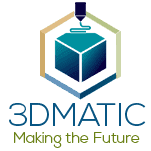Many people are aware of 3D printing, because they have seen advertisements on TV or on the web. The naïve mentality attached to 3D printing suggests that this novel technology enables a person to download and print plastic parts such as toys, telephone cases, coffee mugs, jewellery and similar objects at home. There are many other misleading or incomplete perceptions about 3D printing and what to expect from the technology. Here are more misleading perceptions about 3D printing:
- 3D-printed parts cannot be as strong as traditionally-manufactured parts. The layer-by-layer material deposition technique cannot produce parts with uniform strength, which can be obtained with injection moulding.
- 3D printing is helpful for rapid prototyping but not for producing “serious products” such as automobile parts or metallic parts made from alloys.
- 3D printing is more cost-effective in terms of material costs and the time required to produce products. However, 3D printing is primarily for hobbyists but not for manufacturing large-volume products.
Do these opinions and perceptions tell the whole story, or do they harbor misconceptions? In order to better understand 3D printing, and what expectations are reasonable for the technology, this blog post attempts to answer these questions:
- What is 3D printing?
- What are the benefits and limitations of 3D printing?
- How is 3D printing utilized today?
- What foreseeable trends in 3D printing are on the horizon?
What Is 3D Printing?
3D printing is an additive material deposition process for creating three dimensional solid objects from a digital design file. Before an object can be 3D printed, a virtual design of the object is created by using CAD software. Then a digital file is created from the CAD design file for 3D printing. Whether a 3D printed part can be as strong as a traditionally-manufactured part depends on the method used for 3D printing.
There are three main types of 3D printing:
- Selective Laser Sintering (SLS) uses a high power laser to fuse small particles of plastic, metal, ceramic or glass powders into a mass that has the desired three dimensional shapes. High and uniform structural strength is achievable with this technique.
- Fused Deposition Modeling (FDM) is trademarked by Stratasys®. The method uses a plastic filament or metal wire (from a coil) which is heated and extruded from a nozzle. The nozzle is moved in both horizontal and vertical directions by computer-aided manufacturing (CAM) software package. The extruded material hardens immediately and produces an object with tailored structural properties.
- Stereolithography (SLA) dispenses liquid ultraviolet curable photopolymer resin from a vat and uses an ultraviolet laser to build the object’s layers one at a time. For each layer, the laser beam traces a cross-section of the part pattern on the surface of the liquid resin. Exposure to the ultraviolet laser light cures and solidifies the pattern traced on the resin and joins it to the previous layer.
What are The Benefits and Limitations Of 3D Printing?
The descriptions for the three main 3D printing methods clear up some of the misconceptions about the technology, and the descriptions make it easier to see the benefits that 3D printing can provide:
- Contrary to intuition, 3D printing can produce objects from different materials which have tailored and uniform structural properties, especially when SLS or FDM printing is utilized.
- Although 3D printing is not yet ready for printing objects from all types of engineering materials, it has the potential to do so.
- Because the printing process is slow, many large 3D printers will be required for large volume manufacturing.
- Printing avoids the disadvantages of previous subtractive methods. These disadvantages include wastage of material, and the complications associated with machining (generating exact shapes with high precision), filing, milling, and grinding. The need for hard tooling is eliminated. For these reasons, 3D printing is more cost effective than subtractive manufacturing.
- 3D printing is suitable for rapid prototyping, thereby leading to shorter product development cycles and TTM (Time To Market).
How Is 3D Printing Utilized Today?
Although it will take some time for 3D printing to account for a significant portion of industrially manufactured products, 3D printing is growing very rapidly. Products which are currently created with 3D printing may be classified into two groups: Industrial printing, and Personal printing. Many products could be classified as belonging to both classifications.
Examples of industrial printing (rapid prototyping and manufacturing) are:
- Parts for fighter jets,
- Prosthetics (arms, feet),
- Concept cars,
- Statues, Jewelry, Shoes,
- Dental crowns, bridges, and other orthodontic appliances (software provided by Stratasys®).
Examples of personal printing (hobbyist oriented printing) are:
- Toys, Handbags, Phone cases,
- Guns, Coffee cups, Fabrics,
- Musical instruments (examples: guitar, flute),
- Model replicas (examples: expensive cars, figurines),
- Medical models (examples: feet, arms, organs, kidneys) used for anatomical studies and medical instruction.
What are Foreseeable Trends In 3D Printing are On The Horizon?
The following list provides some of the most likely trends to expect in 3D printing:
- Industry will produce more 3D printed parts such as aircraft and automobile components, as well as many appliances.
- The medical industry will use 3D printing of custom designed implants and prostheses. Possibly, printing of soft tissue and medical prescription drugs could be introduced.
- Custom ordered merchandise will increase. For example, custom ordered hearing aids will be prescribed by audiologists and delivered to the patient. Similarly, custom fitted prostheses will be ordered by physicians for their patients.
- Factories will introduce 3D printing into the product delivery cycle in order to minimize wastage of materials, to reduce tooling costs, and to perform rapid prototyping.
- R&D expenses will be reduced because 3D printing will be used to perform feasibility studies on innovative product ideas and invention proposals.
The market for home (or hobbyist-oriented) printing will increase because the cost of lower end 3D printers will decrease, and the web will provide more downloadable designs for home printing.

